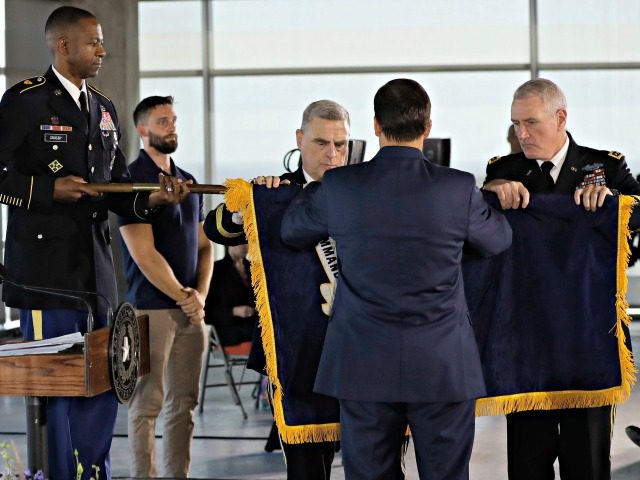The Army on Friday launched Army Futures Command, its first new four-star command since 1973, tasked with preparing the Army to fight and win future wars.
But instead of being located on a traditional, fenced-off Army post, the command is located in downtown Austin, Texas, in the middle of one of the nation’s newest growing technological hubs.
In fact, it is located on the top floor of the University of Texas System Building, a 19-story high-rise in downtown Austin overlooking the city’s Capital building.
About 500 Army personnel will be based there, embedded with large tech firms and small start-ups — and uniforms will not be required.
“Locating it here in Austin demonstrates the type of bold change needed to excel in today’s complex environment,” said Army Secretary Mark Esper at the command’s activation ceremony on Friday.
The idea is to spark innovation in how the Army — traditionally a large, slow, and bureaucratic organization — thinks, plans, and equips its soldiers as it faces growing competition from near-peer threats from China and Russia.
Esper described the Army as at a strategic inflection point, similar to the one the Army found itself in after the Vietnam War, when it had to gear up for the threat from the Soviet Union.
“Today we are at a similar point in history,” he said, calling for a “major shake up.”
Army Futures Command will be in charge of the entire Army modernization process, from concepts, to research and development, to fielding the next generation combat systems.
Army Chief of Staff Gen. Mark Milley called the command the Army’s “scout into the future.”
“This command is the command of the Army that is going to look over the hill,” he said. “This command is all about setting the United States Army up to be not only winning on the battlefield, but to be decisive and absolutely dominant on the battlefield.”
Milley said humans are currently living through a fundamental change in the character of warfare, where technology is allowing militaries to see and strike better than ever before, with significant implications for the U.S.:
We have cameras all over the place, we have sensors throughout the world. Today, militaries can see as like at no time in 10,000 years of human history. We can hit, strike the enemy like no time in human history with a degree of precision that has never before existed. So we can see and we can strike.
We know that robots are coming on very, very quickly in the commercial sector, and they’re likely to have significant military application. We know artificial intelligence is here. We know there is a multitude of of emerging technologies that are going to have, whether we like it or not, impact in the conduct of military operations.
“It is this command,” Milley said, that is “going to determine victory or defeat on the future battlefield for the United States of America.”
Leading the brand new command will be Gen. John “Mike” Murray, who brainstormed Army Futures Command with Milley.
The new command will be a peer command to the Army’s three major four-star commands — Army Forces Command, Training and Doctrine Command, and Army Material Command, and will be roughly the same size with the same annual operating budget at about $80 to $100 million.
Army leaders say the new command is necessary since all the elements of modernization were spread throughout the Army in an inefficient way that held no one in charge of modernization, and acquisition and procurement of weapons systems.
“We had people spread out throughout the entire Army doing all kinds of things, and everybody was operating off their own sets of priorities. And it was an irrational system that was producing, but it wasn’t producing efficiently, effectively, nor as fast as it could,” said Milley during a press conference after the activation ceremony.
“One of the fundamental things that this command was put in place to solve is to bring it all together, bring all these existing organizations that have to do with science and technology, research and development, modernization, acquisition, procurement, lifecycle and management — bring it all under one four-star general,” he said.
Army officials say there is no formal organizational chart, but the idea is this: Army Forces Command will stay in charge of the readiness of the operational force — the “fight tonight”; Army Material Command will stay charge of all the logistics of the operational force; Training and Doctrine Command will stay in charge of recruiting, training, and operational doctrine; and Army Futures Command will be in charge of preparing the Army for 10 to 15 years from now.
The new command will be set up over the next year and become fully operational by August 2019.

COMMENTS
Please let us know if you're having issues with commenting.